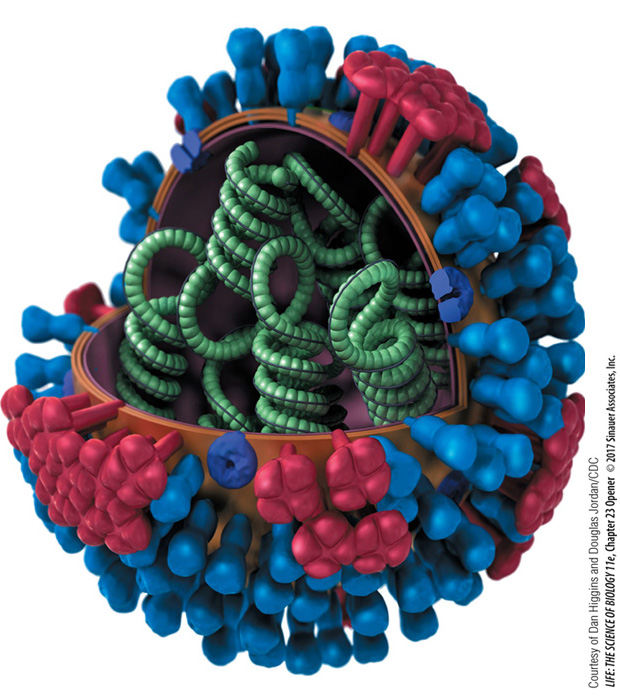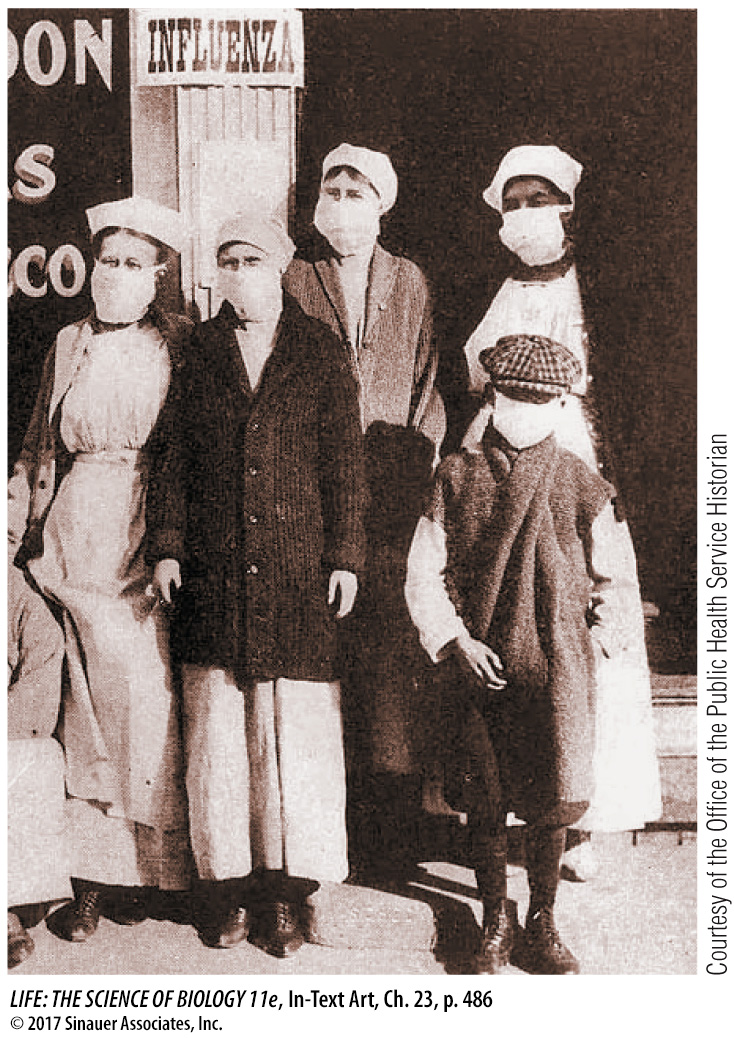Chapter Introduction
486
23
key concepts
23.1
DNA Sequences Record the History of Gene Evolution
23.2
Genomes Reveal Both Neutral and Selective Processes of Evolution
23.3
Lateral Gene Transfer and Gene Duplication Can Produce Major Changes
23.4
Molecular Evolution Has Many Practical Applications
Evolution of Genes
and Genomes

investigating life
Evolutionary Theory Helps Us Make Better Flu Vaccines
Combat in World War I ended in November 1918. But the death toll from four years of war was soon surpassed by the casualties of a massive influenza epidemic that killed more than 50 million people worldwide—
The 1918–

Usually we can count on our immune system to fight viruses, and the immune response is the basis of vaccination. Since 1945, programs to administer flu vaccines have helped keep the number and severity of influenza outbreaks in check. Last year’s vaccine, however, will probably not be effective against this year’s virus. New strains of flu virus are evolving continuously, producing genetic variation in the population. If these viruses did not evolve, we would become resistant to them and annual vaccination would become unnecessary. But because the viruses do evolve, biologists must develop a new and different flu vaccine each year.
The vertebrate immune response is initiated when the immune system recognizes proteins on the viral surface. Changes in viral surface proteins can allow the virus to escape immune detection. Virus strains with the greatest number of changes to their surface proteins are most likely to avoid detection and infect their hosts, and thus have an advantage over other strains. Biologists observe evolution in action by following changes in influenza virus proteins from year to year, and with this knowledge can produce more effective vaccines.
We learn a great deal about the molecular basis of evolution by examining rapidly evolving organisms such as viruses. Molecular studies of evolution, in turn, are put to practical uses, such as the development of better strategies for combating deadly diseases.
Why was the 1918–